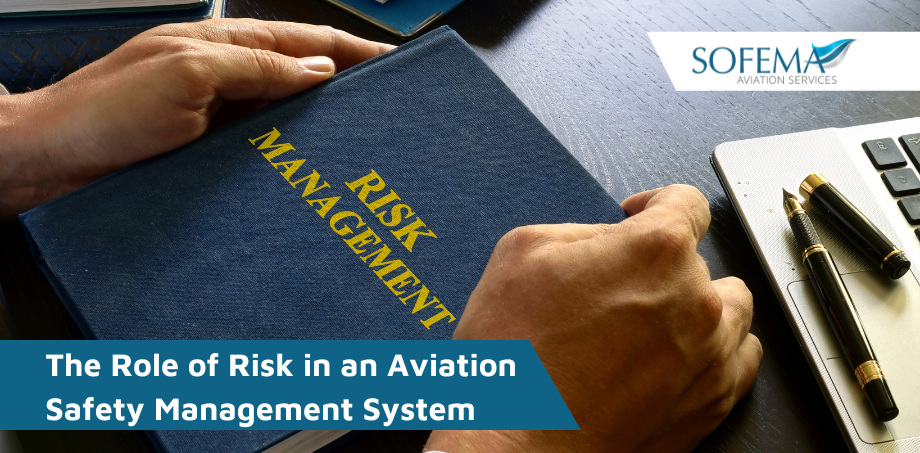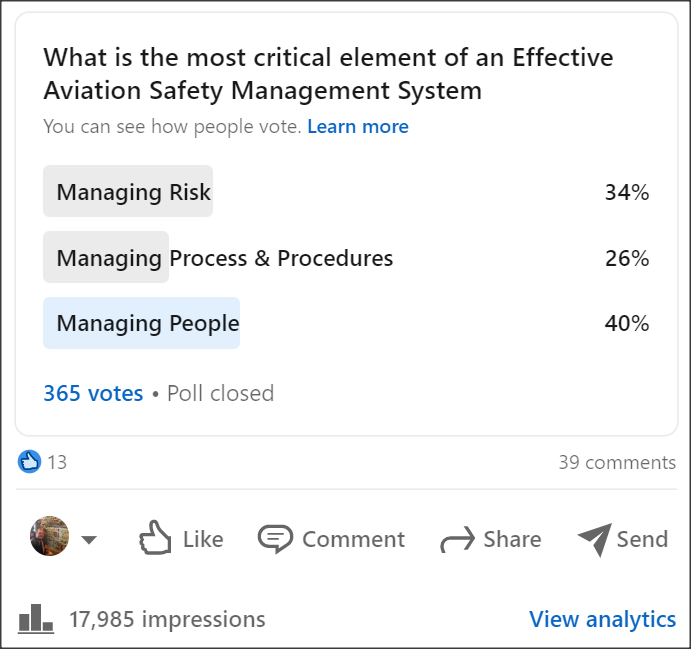Discussion Paper raised by Steve Bentley CEO of Sofema Aviation Services (www.sassofia.com) considers a selection of viewpoints related to the understanding of the role of Risk within the Aviation Safety Management System (SMS).
Introduction – Do we understand what is meant by RISK in our aviation system?
Steve Bentley, the CEO of Sofema Aviation Services, is an Aviation Regulatory Trainer with 50 Years of commercial aviation experience. We at SAS have provided over 60,000 Certificates of course completion to our students who attended courses on either www.sofemaonline.com or www.sassofia.com
Commented Steve “ Whilst the term Risk should be clearly understood it is apparent that there is a significant variation in what our industry colleagues understand by the term Risk! Some examples follow:
- Lack of understanding between What is a Risk & What is a Hazard.
o Some people believe the terms are interchangeable (Clearly they are not!)
- The challenge of engaging with the following with many business area owners not able to give examples of each of the following.
o Root Cause / Contributing Cause / Direct Cause.
- Miss Direction from Regulatory Authorities asking for THE ROOT CAUSE (as if there is a single root cause related to a particular event or finding) – looking for only a single causal factor leads to system weakness & instead of helping industry such behaviour actually serves to inhibit positive developments.
- A misinformed belief that Human Factors are a Root Cause (It is not & there is always a “why” sitting behind every Root Cause.
- A lack of appreciation regarding what is meant by Risk-Based Regulation / Risk-Based Oversight and Risk-Based Auditing.
SMS is composed of four functional components:
- Safety Policy.
- Safety Risk Management.
- Safety Assurance.
- Safety Promotion.
Safety Risk Management is the overall process and Safety Assurance is essentially measuring the Risk in a particular area (which means that half the story is directly related to Risk).
So Risk in fact becomes the overarching reason to have an SMS, everything else answers the statement – we do xyz (process, people, procedures) in order to deliver a lower level of risk.
Considering The SMS Journey
Back in the mid-‘80s our aviation SMS journey started with ICAO taking the lead position because of an oversite “GAP”
- Quality Control / Quality Assurance was looking at the here and now but it was not looking into the future.
- QC/QA did not ask risk questions related to a myriad of hazards faced by the business. “What can happen and what can we do to lower our exposure”.
- Many business leaders genuinely believe that SMS is one more burden placed on the organisation which can be fixed with the appropriate manual.
- The challenge any SMS practitioners faces is to win over the organisation members top to bottom to genuinely understand the value of SMS.
- Very few companies truly engage with the challenge – those that do reap the benefit.
Asking a question on Linked to understand if people appreciate that the most critical element of an effective aviation safety management system is in fact the challenge to manage risk.
Whilst the question was very specific of the options provided Managing Risk must be the most critical element because all other answers sit below not alongside
Note: Everything (yes everything) supports the need to lower the risk faced by the organisation. Just over 1/3 of the respondents understood this and 2/3rds believed something else for example managing people was the most critical.
Is it because of interpretation? Maybe yes, however at the end of the day it is pivotally important for the organisation to buy into the top-down need to manage risk throughout the business with all other elements supporting this objective.
Here is the comment of one respondent who nails it!
- Managing risk is the most critical element of an effective SMS. No SMS can be effective without proper risk management.
- Risks can be also defined as the consequences of doing the business/operation; therefore, they must be understood and controlled as a fundamental safety principle.
- I know from my experience that managing risks is the core task of an SMS because all the safety objectives can be derived from this activity (documented or not).
- In my opinion on an SMS, managing processes and people comes after doing the risk management, because it is this activity that sets the objectives for the other two.
We asked the following question on LinkedIn and limited the responses with a specific objective:
As you can see over 350 people took part in the Survey and the page received almost 18,000 views!
Here are some more comments from respondents:
- You have been able to identify and build a flawless risk mitigation plan, and set up extraordinary procedures, but if you can’t inspire your people to participate, all is in vain.
- Although I did tick on “Managing Risk” however the keyword in SMS is “System”. Without the triad of people, process, and procedures, Risk cannot be managed. So all three elements are inextricably linked.
- None of it. All of it. SMS is Business as usual with a focus on Flight Safety. As in civil aviation industry understanding of business barely exists, Organizations struggle to implement SMS which is nothing else than 12 basic business management elements.
- Always people. However, none of these options unless you count fostering genuine interest and initiative as ‘managing’. Anything else is missing the point that any SMS is useless unless people buy into it.
- 12 elements are 12 brothers and sisters. They are equally important. I personally believe that the reason to have an SMS is to manage safety as managing a business. Managing anything also requires managing risk, it just does not mean that this is the most important element of managing something.
- If people cannot analyse, plan and address risk, etc then procedure matters for nothing. Whilst risk management is the foundation of SMS, your question asked for the most ‘critical element’. People design, implement, revise, etc everything in an organisation; the most critical element of everything that we do – therefore – remains people. We must remember the basics.
- I place managing people above managing processes & procedures. Processes and Procedures are in place to manage risks and ensure people (this is the variable here in the sense that different people have different ways of doing things) follow the set processes and procedures. If people abide by them, things would be pretty safe. Having said this, all 3 are very closely linked.
Next Steps
Follow this link to our Library to find & Download related documents for Free.
Sofema Aviation Services and Sofema Online provide SMS consulting, Implementation, Regulatory Compliant & Vocational Training for Airports, Operators, CAMO,s and Maintenance Organisations. For additional details visit our websites www.sassofia.com and www.sofemaonline.com or email team@sassofia.com
Tags:
aviation, aviation safety, Risk, Risk Management, Safety Management System, Safety Risk Management, SMS, Hazard, Aviation SMS, Aviation Risk, SAS blogs, Aviation Safety Managemen, Safety Hazards





